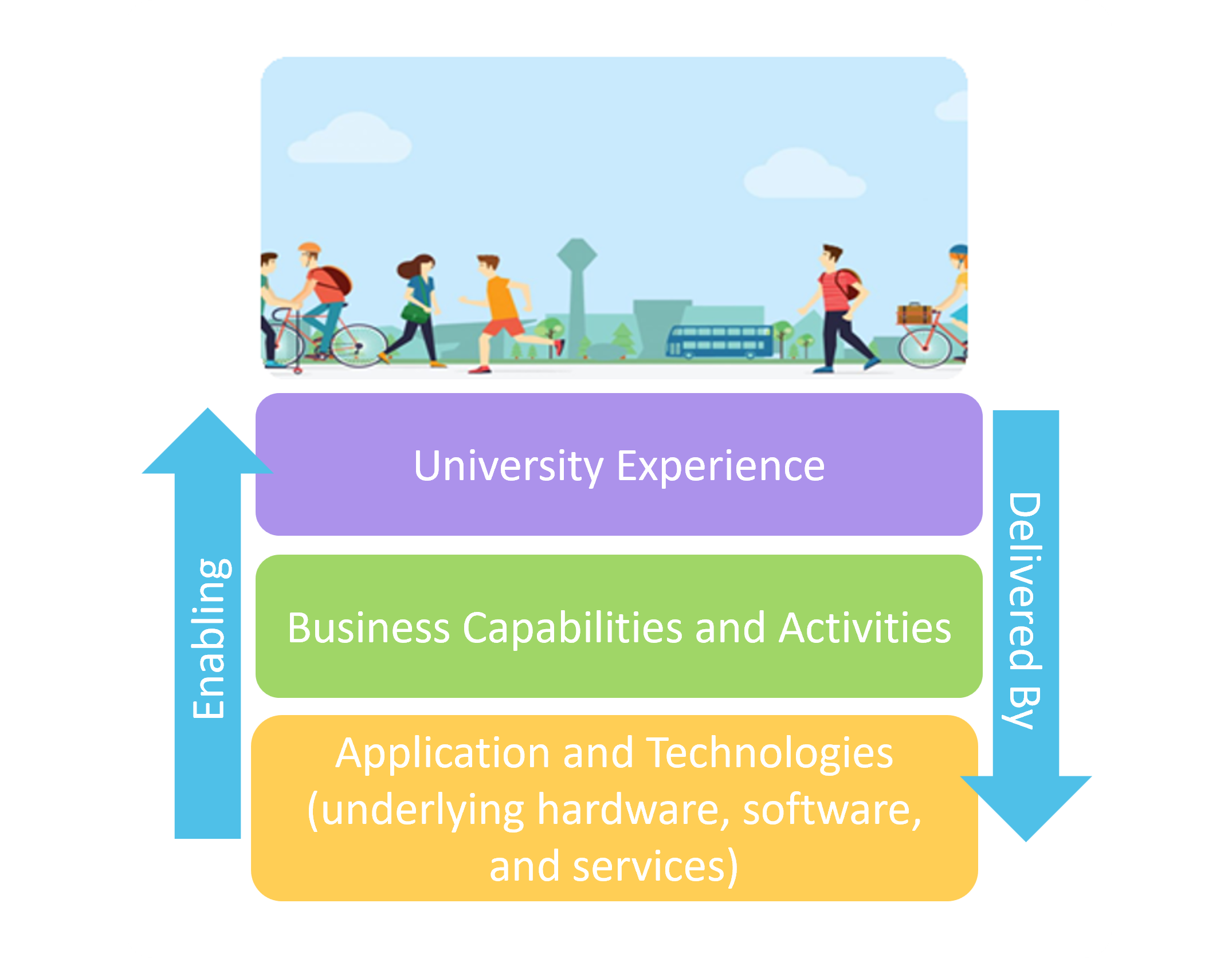
Enterprise Architecture
Interweaving Business and IT

Enterprise Architecture @ UCD
Enterprise Architecture (EA) is a holistic approach to designing and maintaining the digital campus,
that enables UCD to achieve the right balance between business transformation and continuous operational efficiency.
- Overview and benefits of Enterprise Architecture@UCD
- UCD Digital Solutions Deployment Guide
- (opens in a new window)UCD Application Register
- Glossary
- IT System Portfolio
- Higher Education Reference Models
For Enterprise Architecture queries please contact (opens in a new window)UCD's Enterprise Architecture Manager
UCD IT Services
Computer Centre, University College Dublin, Belfield, Dublin 4, Ireland.Contact us via the UCD IT Support Hub: www.ucd.ie/ithelp
